When more than 1 million people descend on a city for the Big Game, it’s important to know how to handle the influx of people — and much of it starts at airports.
Before the confetti fell on the New England Patriots at the Big Game in Houston, Texas, February 5, 2017, a project team was already planning airport accommodations for the following year in Minneapolis/St. Paul.
“We really got involved and started developing a game plan with initial discussions before the previous game even wrapped up, said Lindsay Reidt, SEH airport engineer.
While Minneapolis/St. Paul International Airport handles the majority of the people coming into the Twin Cities, it’s up to the smaller “reliever” airports to provide relief, or additional capacity to the area.
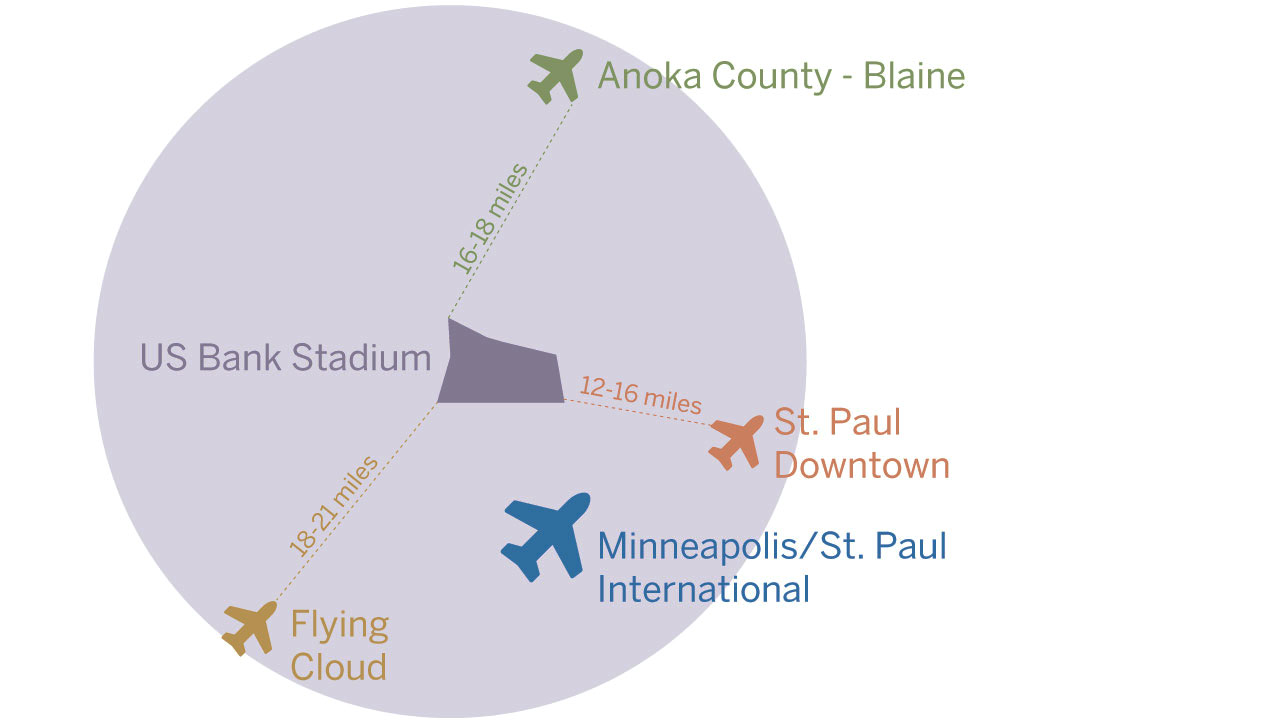
The primary reliever airports planning for the event include:
- St. Paul Downtown Airport
- Anoka County-Blaine Airport
- Flying Cloud Airport in Eden Prairie
Although it’s impossible to know, Reidt thinks the reliever airports will be where many of the celebrities and high-profile attendees will travel through. It’s hard to say who or how many people will come through the reliever airports because a majority of reservations aren’t likely to come in until about a week or two before the game. Which teams play in the game have a big role in who will attend.
Reservations are made via an online system, and there are approximately 225 spots for aircraft to park during the event at each of the three reliever airports.
How did they arrive at that number?
With a lot of careful planning says Reidt.
The project team had to submit an event plan to the Federal Aviation Administration (FAA) detailing exactly how to handle the influx of aircraft during the game and its festivities. Here’s the four things the plan contained.
1. Airport Parking Plan
In order to fit approximately 225 parked aircraft at the St. Paul Downtown Airport, the team had to get creative with parking scenarios.
“We’ll have to close down all but one active runway,” Reidt says. “We’ll also close down several of the taxiways and non-essential pavements.”
Non-essential pavements will include taxilanes, aprons, and hangar driveways. The closed spaces will act as aircraft parking spaces. The team then looked at a map of the available spaces and developed a plan.
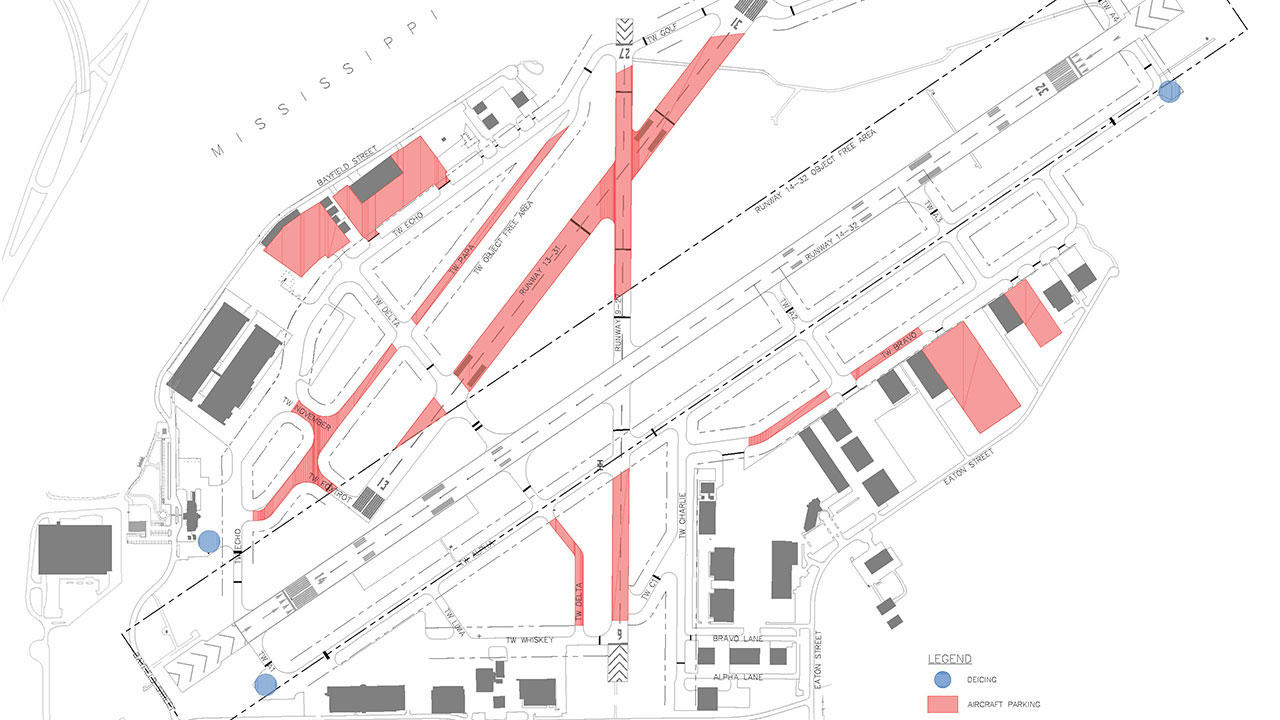
To develop the plan, the project team followed these four steps:
- Determined which pavements could close for aircraft parking while maintaining access to the runways and protecting the critical runway and taxiway surfaces required to stay open.
- Determined the fleet mix of aircraft for the event — the types of planes expected and what percentage of each are anticipated.
- Used a computer program to virtually “park” the aircraft on the closed pavements. To maximize the space the team explored ways to keep the wheels on paved surfaces while allowing the tail to hang over grass. The project also determined clearance distance between the parked aircraft for maneuverability and access.
- Several revisions of this plan were explored before determining the final number of parking spaces available, which pavements would be closed and how the traffic flow would operate during these conditions.
2. Traffic Flow Plan
The influx of airplanes for the Big Game will impact normal operating procedures at the reliever airports. A significant portion of the traffic is expected to arrive the day before or on game day and the majority are expected to leave right after the game finishes. It’s important to develop a system of how and when takeoffs and landings will take place and where the planes will taxi once they land.
Because of the different potential wind directions, it was necessary to have two plans — each using a different runway end. The air traffic control tower then uses the traffic flow plan to determine how the aircraft will taxi once they land. The direction and route of taxiing depends upon which runway was used and where the aircraft will be parking.
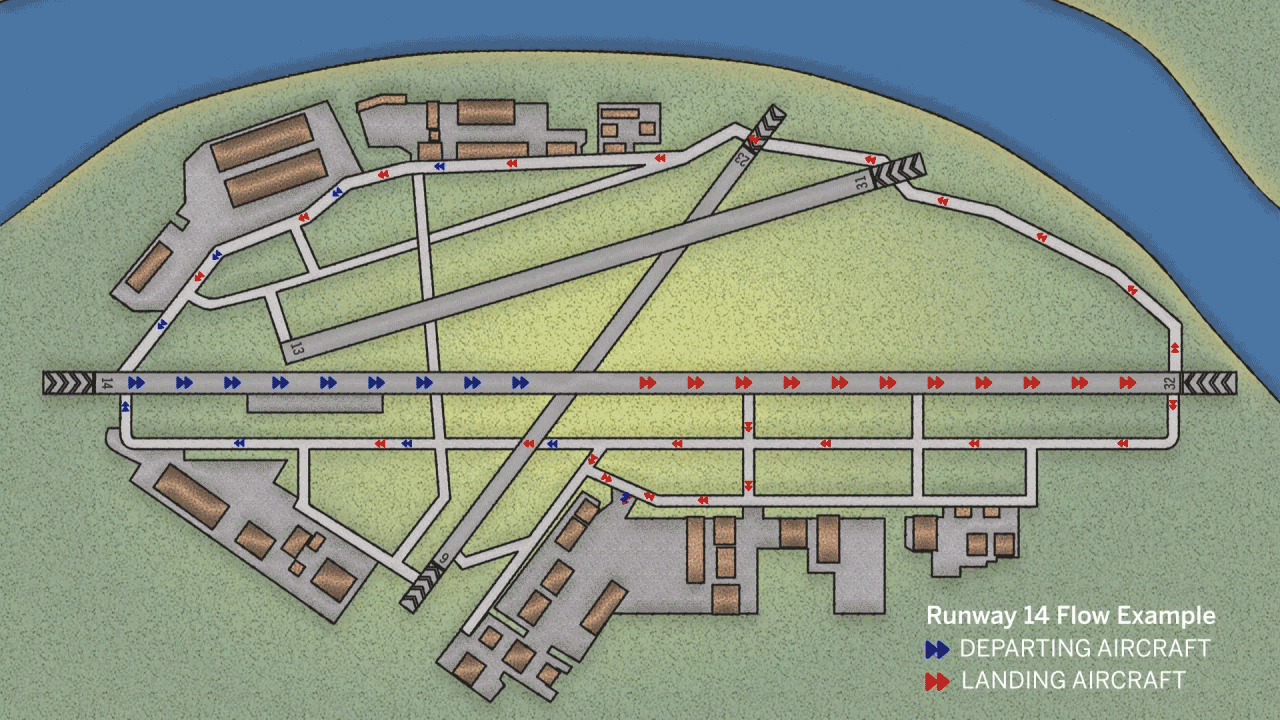
The FAA has determined exactly how many aircraft can land and depart each hour during a specific time span around the event. This determines how many reservations will be allowed at each airport during the time span before and after the game.
3. Environmental Plan
To accommodate all of the extra operations, additional supplies are needed — most notably, deicing chemicals and fuel. An environmental plan is required to address the storage, application, and potential clean-up of these materials.
Glycol is a de-icing chemical fluid applied to airplanes. The fluid is applied to aircraft prior to departures. It removes ice and temporarily keeps ice from forming on the aircraft. The chemical also helps planes during takeoff in cold climates. Not knowing what the weather will be, airport personnel have ordered more material to have on hand than normal.
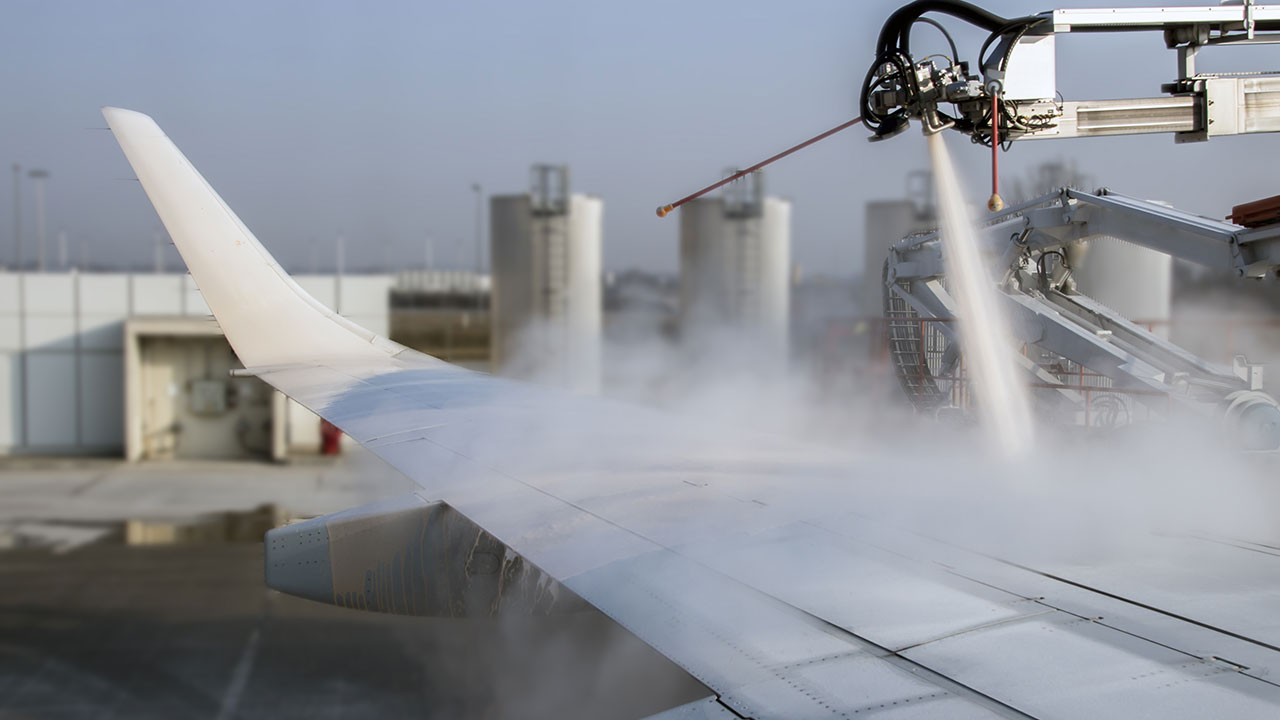
Fluid that falls off the aircraft and onto the ground is collected periodically by sweeper trucks and stored according to strict environmental standards. How often the material is collected and where it is stored are important components of the environmental plan.
Airport personnel will also bring in additional fuel reserves to meet the expected demands from the additional aircraft. Personnel handling the aircraft will also need to prepare for additional lavatory dumps and removing and storing of materials on board the aircraft that are susceptible to freezing.
“You have to figure out what areas will be used for fueling, where the deicing will take place, how much fuel, how much deicer,” Reidt says. “There’s a lot to account for.”
4. Wayfinding Maps/Ground Transportation Parking Plan
People coming in for the game likely won’t be familiar with the Twin Cities or the airports, so it’s important to make getting around as easy as possible. A solid wayfinding plan is key. Large international airports are set up with plenty of signage directing travelers which way to go. But the smaller reliever airports don’t have the same level of wayfinding.
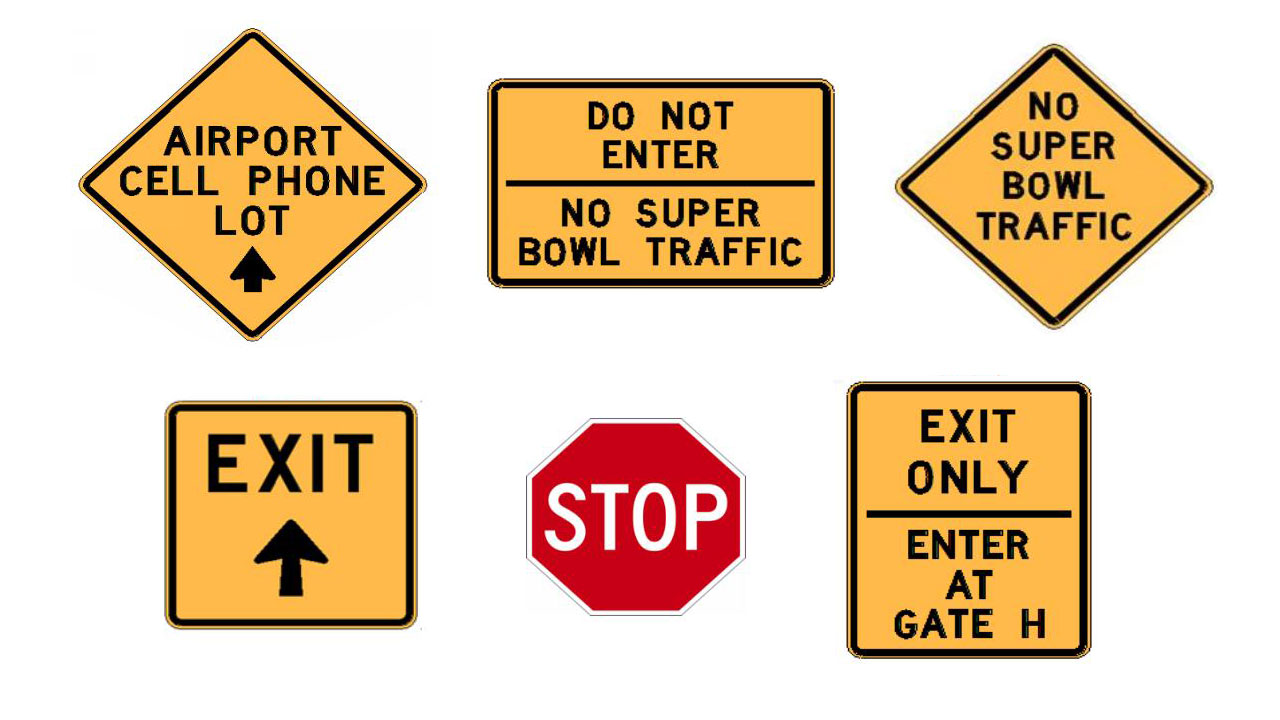
Ground transportation needs to know quickly where and when to pick up arriving passengers.
To help limo drivers, taxis, shuttles, Uber and Lyft drivers and other ground transportation people, the project team set up a cell phone lot. The lot acts as a staging area for drivers waiting to pick up people flying in. Once the passenger they’re picking up arrives, the driver receives a phone call and follows signage to meet them at the aircraft.
Because the smaller reliever airports are not designed to handle the increased traffic capacity the event brings, in a such a short period of time, roadway features and gates will be used in other ways.
Some roadways within airport grounds will be designated as one-way traffic only to help minimize congestion. Certain airport gates will be designated as entrance only points, while others will be exit only.
Guard shack/check point locations outside airport property will increase security measures as well.
Bringing it all together
The Big Game is the biggest event of the year for any city. With it come thousands, if not more than a million people — and a lot of them arrive via smaller, reliever airports. To handle this influx of people, officials need to have a solid plan. They need enough supplies, enough people and they have to make everything easy. The airports also want to make a good first impression on travelers. To do it all takes a team of dedicated, talented professionals.
About the Expert
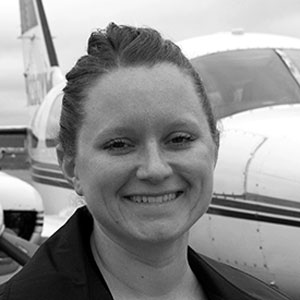
Lindsay Reidt is an airport engineer dedicated to helping airports operate at their maximum efficiency.

.png?width=113&name=SEH_Logo_RGB%20(1).png)
